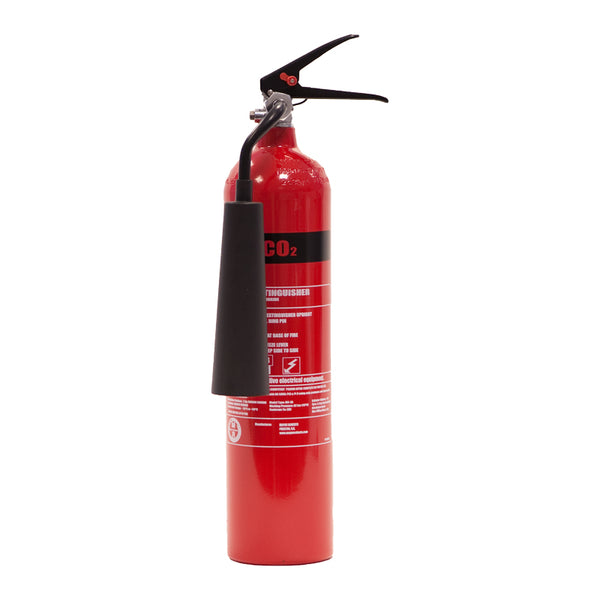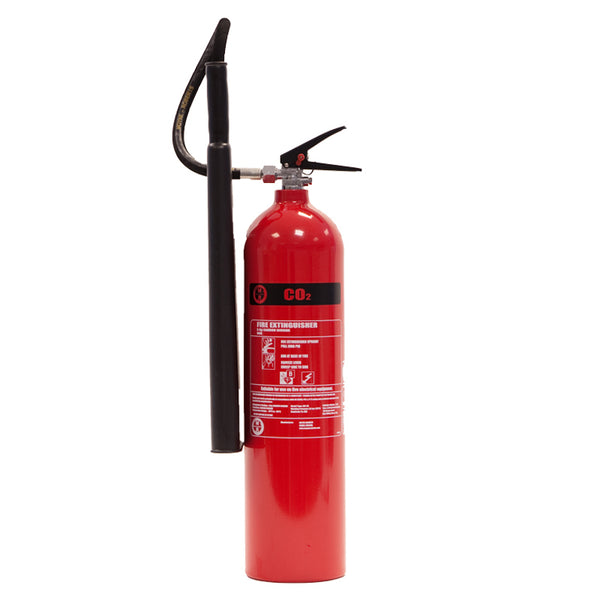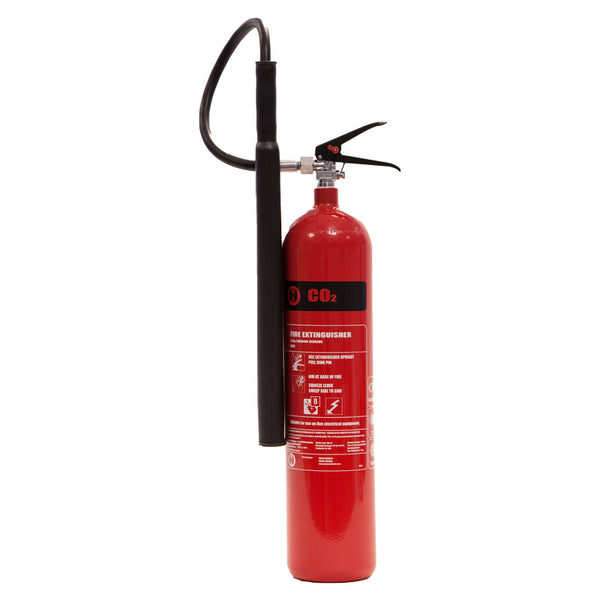Co2 extinguishers originally came into prominence as a replacement for halon or BCF extinguishers which were banned for most applications in 1993 under the Montreal protocol after it was discovered that halons had the highest ozone-depleting capacity of any chemicals in common use. Co2 extinguishers contain liquefied carbon dioxide under extreme pressure and are notable for not having a pressure gauge on the canister and a hard flute shaped discharge horn. In the UK they are also colour coded with a black panel.

Carbon dioxide fire extinguishers are primarily intended for use on Class B fires which include flammable liquids such as petrol, oil, diesel, (excluding cooking oil), some solid fuels like wax. In addition as carbon dioxide is also non-conductive and unlike powder and foam leaves no harmful residue that may damage or contaminate sensitive circuitry they are commonly recommended for fires involving electrical equipment. Co2 extinguishers are not effective on flammable gases.
The combination of properties of Co2 have applications in laboratories, clean rooms, engine compartments, generator rooms, boats and flammable liquid storage areas. They are also commonly found in offices and server rooms containing computer equipment.
Although they are rated for use on flammable liquids they should not be used on cooking oil fires as the ice cold high pressure discharge will splash the burning and spread the fire further.
Carbon dioxide extinguishers are not really suitable for dealing with fires outside as the gas quickly disperses, so are generally restricted to indoor use. On the other hand be aware that carbon dioxide replaces the oxygen in the air which can lead to asphyxiation when discharged in confined spaces, so take care to ventilate the area as soon as the fire is under control.




